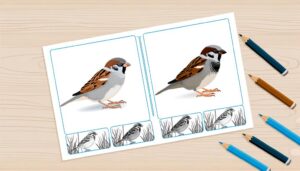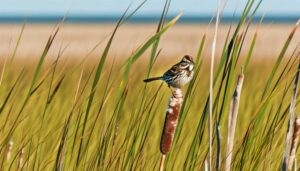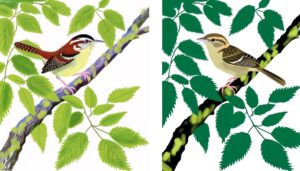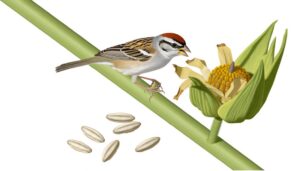How to Conduct the Florida Grasshopper Sparrow Survey Protocol: Step-by-Step Guide
The Florida Grasshopper Sparrow survey protocol integrates traditional field techniques such as point counts, transect surveys, and mist netting with advanced data recording. These include digital acoustic monitoring, high-resolution telemetry, genetic analysis, and Geographic Information Systems (GIS) mapping to generate essential data on population patterns, habitat use, and overall health.
Through the application of this precise and multifaceted approach, researchers can monitor population dynamics, detect threats, and formulate evidence-based conservation strategies more effectively. The insights gathered through this protocol promise a deeper understanding of this endangered species and its conservation needs.
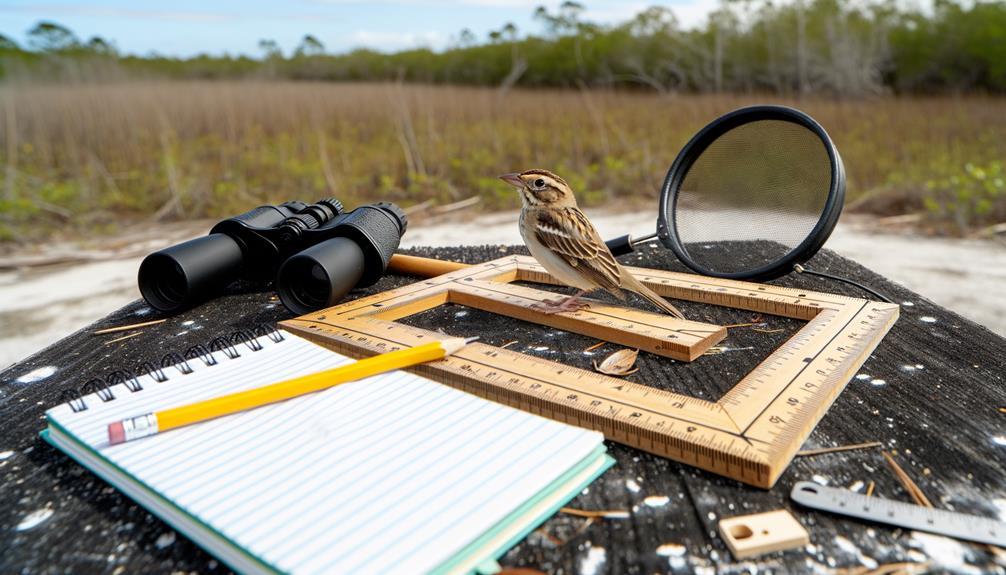
Key Takeaways
- The survey protocol includes traditional techniques like point counts, transect surveys, and mist netting for observing sparrows.
- Advanced methods such as digital acoustic monitoring, high-resolution telemetry, and genetic analysis are also employed.
- Geographic Information Systems (GIS) are used to map and predict habitat use, crucial in the survey protocol.
- These survey techniques help in monitoring population dynamics, detecting shifts in size and distribution, and understanding nesting preferences.
- The data collected aids in improving habitat restoration, enhancing population management, and increasing public engagement in conservation efforts.
Understanding the Florida Grasshopper Sparrow
Diving into the world of ornithology, one quickly comes to appreciate the complexities of the Florida Grasshopper Sparrow, a petite bird species that has adapted to Florida's unique prairie ecosystem.
This sparrow, or Ammodramus savannarum floridanus, is a subspecies of the Grasshopper Sparrow and is exclusive to Florida. They're named for their insect-like song that resembles the sound of a grasshopper. They're primarily ground dwellers, utilizing the tall grasses for cover and nesting. Their plumage is a subtle blend of browns and grays, providing them with excellent camouflage.
Unfortunately, their numbers have markedly dwindled due to habitat loss, making them one of the most endangered birds in the U.S. A thorough understanding of this bird's behavior, habitat, and challenges is essential for their conservation.
Importance of Sparrow Surveys
In the domain of conservation efforts, conducting regular sparrow surveys plays a pivotal role in monitoring the population dynamics and habitat preferences of the Florida Grasshopper Sparrow. Such surveys provide valuable data that guides management decisions and conservation strategies. They highlight shifts in population size and distribution, indicating potential threats or successes in habitat conservation.
Additionally, surveys can reveal changes in the sparrows' dietary and nesting preferences, which may reflect alterations in their ecosystem. For a species as critically endangered as the Florida Grasshopper Sparrow, routine surveys aren't only important, but essential. They serve as a diagnostic tool, allowing conservationists to detect and respond to population declines or habitat changes promptly and effectively, thereby increasing the sparrows' chances of survival.
Traditional Survey Techniques
Traditional survey techniques, such as point counts and transect surveys, have long been utilized to monitor the population and behavior of the Florida Grasshopper Sparrow. These techniques, although seemingly simplistic, have proven to be effective in gathering critical data about this imperiled species.
- Point counts involve a researcher positioned at a fixed location, recording all sparrows seen or heard within a set radius.
- Transect surveys require the observer to walk a predetermined path, noting the number and behavior of sparrows encountered.
- Mist netting, another method, involves capturing sparrows for closer study and release.
These traditional methods provide essential baseline data about Florida Grasshopper Sparrow populations. They remain valuable for their simplicity, cost-effectiveness, and ability to be carried out by a wide range of personnel.
Advanced Data Recording Methods
As the quest for knowledge about the Florida Grasshopper Sparrow intensifies, researchers are turning to more advanced data recording methods to glean intricate details about this elusive species.
They're utilizing technologies such as digital acoustic monitoring systems and high-resolution telemetry to record and analyze the bird's vocalizations and movement patterns. These methods, more precise than traditional ones, provide real-time, objective data, eliminating human error and bias.
In addition, genetic analysis of collected samples is offering unique insights into the bird's population dynamics, health, and genetic diversity.
Researchers are also harnessing the power of Geographic Information Systems (GIS) to map and predict the sparrow's habitat use, enabling a more targeted approach to their conservation.
Impact on Conservation Efforts
With these advanced data recording methods dramatically increasing our understanding of the Florida Grasshopper Sparrow, we're seeing a significant impact on conservation strategies for this endangered species. Further insight into the bird's habits, habitat preferences, and population dynamics is fostering more effective conservation efforts.
These efforts are particularly noticeable in three key areas:
- Habitat restoration: Improved knowledge of the sparrow's preferred nesting sites is guiding targeted restoration of native grasslands.
- Population management: Enhanced data is aiding the development of more precise population models, ensuring the species' long-term survival.
- Public engagement: Detailed information about the sparrow's plight is driving increased public awareness and support for its protection.
Thus, the application of advanced data recording methods is revolutionizing the approach to the conservation of the Florida Grasshopper Sparrow.
Conclusion
In sum, the meticulous analysis of Florida's Grasshopper Sparrow through traditional and advanced survey techniques is a beacon of hope in the conservation world.
This tiny, elusive bird, etching its existence in the tapestry of Florida's ecosystem, can now be better understood and protected.
Indeed, these survey protocols not only hone our scientific acuity but also strengthen our resolve to conserve, serving as a vivid reminder of our profound interconnectedness with nature.


